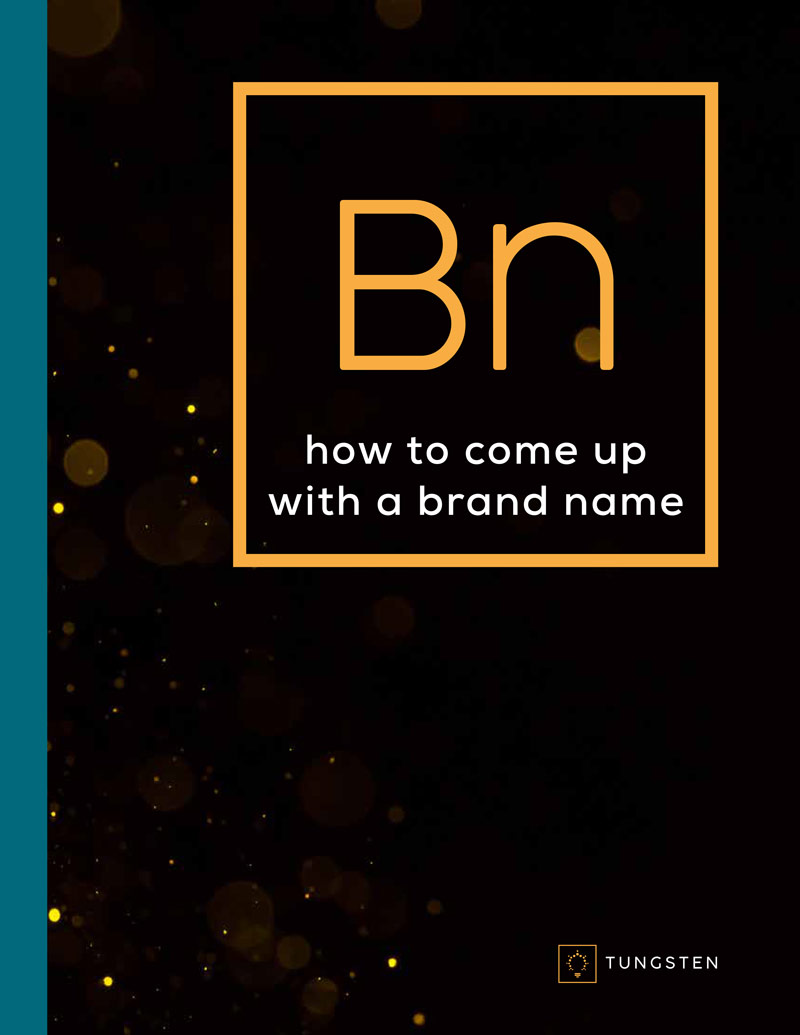Episode 035: Naming a Tech Company – Six Steps to Branding Success
Brilliant Branding Live Show Archives
Originally aired weekly August 2017 - August 2018 With host Phil Davis
Show Description
"Brilliant Branding" shines the spotlight, and provides valuable insights, into the most common, and frustrating company identity issues facing startups, entrepreneurs, consultants, and even established business owners. Topics address timely issues such as effective naming strategies, smart logo design, tips for trademarking, clear brand messaging, engaging social media and reputation management. We take a deep dive to uncover the "pivot point" of an organization, the "why" behind each business to help build a more clear, cohesive and compelling brand image.
Hello and welcome to another episode of Brilliant Branding! Today we’re going to change things up a bit and talk about branding in a specific niche. Today we’re going to be talking to the IT and tech crowd. Believe it or not, IT/ tech is the number one industry that we serve. We’ve helped tons of IT and tech companies over the years. The financial industry is a close second. Naming a Tech company can be a challenge, so in this episode, we’ve compiled six steps for branding success!
What’s interesting about these categories is that they all involve a lot of left-brain thinking. The type of thinking required to be successful as a developer or a financial advisor is far different from the type of thinking required to successfully brand a company. Branding is very right-brained. It involves a lot of creativity, emotion, and these sort of lateral movements where you say, “What if you tried this?” and “How does this feel?”. So, while naming a company can already be a pretty tough task in general, naming an IT company can be an especially daunting task. That being said, it’s critical that you get it right.
Your name is your cornerstone. It’s what sets you apart from the sea of competitors and shows potential customers and clients how you do business differently. Lots of people run IT companies. Your brand is the only thing you have to show people why they should choose yours. So if you’re naming a tech company and you feel stuck, you’re in luck! Here are our six steps for tech company naming success!
Step 1: Form Your Team
In this step, you’re going to assemble a team of people who are going to make the ultimate decision as to what you’re going to name your company. As we always say, gather widely and decide narrowly. While it’s great to get input from as many people as you can, make sure the core group of decision-makers is small. This eliminates a lot of friction and disagreements. It also keeps your name from becoming a camel (a horse built by a committee). We recommend the group consists of a small, odd number of people to create a clear majority. 1, 3, or 5 people is usually best. Last but not least, make sure that everyone who has a say in the final decision is involved early in the process in order to avoid surprises and wasted time, money, and effort.
Step 2: Define the Project
A lot of times tech companies reach out to us when they’ve developed some cool new SaaS product, some new gadget, etc. They are so wrapped-up in the product and that’s all they can think about. This is where we’ll encourage them to take a step back and ask themselves what it is that they really want to name. Are we naming the platform? The tool? The technology? The company?
One of the biggest mistakes we see people make here is that they try and name their company after their product. Remember Blackberry? Their parent company was Research in Motion (RIM). RIM’s product became so wildly successful and well-known, that they ended-up rebranding themselves as Blackberry. In other words, they named their parent company after their product.
In Blackberry’s case, that worked. It does work for some companies, but you need to ask yourself whether or not it will work for yours. Is your product that famous? Is it so revolutionary that the company’s entire identity needs to revolve around that one product? Keep in mind that naming the company after one product can also limit your ability to expand beyond that product in the future. So ask yourself what business you’re really in. Avoid naming yourself as the technology itself when you’re actually a technology consulting service. Avoid naming yourself as a SaaS product if you plan to create new and different products in the future.
If you’re naming the technology itself, we recommend taking what we call a “constellation of brands” approach. This is where you brand the company in such a way that it creates a theme off of which sub-brands can be created. For example, years ago we had a company from Malaysia come to us. They told us that a great deal of energy is wasted by electronics that are plugged into the wall, even when they are turned off. They’d created a product that would stop or reduce this wasted energy and they wanted a name for it. After going to work on this project for some time, we ultimately settled on the name Tricklestar. As they came up with more products, they ended-up needing a parent company name. So, we named the parent company Circlebright. See how those go together?
If you’re going to take this approach, the sub-brands need to be definitive, but the company can be way more broad. The best way to name a company broadly is to name it based on attributes. For example, we had a company approach us years ago whose name was “PCnet-inc.com”. Imagine the confusion involved in having to type all that in! The company got started doing a lot of work with PC’s and ethernet cables, but they’d since moved on to cloud-based services and other modern technology. Not only was their name difficult to remember. It also sounded a little dated.
As we worked with this company and started asking deep, probing questions, we discovered that they prided themselves for being “core to people’s businesses”. We took that theme and played with it and we ultimately came up with the name “Corserva”. The name incorporates that idea of being “core” or “essential” and mixes it with “serva”, which sounds like “server” and “service”. Notice here that no part of the name literally describes what the business does. Instead, it uses “-ish” words. Instead of putting “computer” in the name, the name sounds “computer-ish”. Instead of naming it “service” or “server”, it is a sort of “-ish” of those words. By doing this, we’ve created a brand “container” big enough to fit the company’s current product offerings as well as future product offerings for decades to come.
Step 3: Make a List of Attributes
“Sell the sizzle, not the steak.” A lot of times in this engineering mindset that tech companies are in, it’s way too easy to want to be literal. That can be a problem. It’s likely that you are deeply attached to the technology itself, but guess what? That’s not what your customers want! They don’t care about the technology itself. They care about the benefit that technology provides.
If someone invented a teleportation device and made it commercially available and a reasonable price, what do you think would happen to car sales? You’d probably see a drop. Sure, there would be people who would still want to drive a car for recreational purposes, but that’s not why most of us drive cars most of the time. We drive cars because they get us to where we want to go. That’s the benefit. People don’t go to McDonald’s because they have the best burgers. They go because it’s convenient and the food is cheap. Those are the benefits.
So why is this important? It’s important because all-too-often people get caught up in branding the company around the product, service, or delivery method itself. As a result, their brand becomes in lockstep with that product, service, or delivery method. As time goes on and technology changes, the company brand becomes stuck. Even if the company moves on to adapt to change, they’re now forced to overcome their own brand as a hurdle. Such has been the case with companies like Blockbuster Video, Toys R’ Us, Kmart, and many more over the past decade.
Instead of branding around the product, service, or delivery method, brand around your key attributes. What is it that makes your company unique? What are you known for? Is there a particular way you do business? Is it your customer service? Is it your dedication to quality? Is your company innovative? Is it creative? Are you anchored in tradition? Are you fun and entertaining? Find what attributes are unique to your company and communicate those. Be ruthless in your differentiation.
We call this finding your pivot point. It’s finding the one thing around which your entire brand revolves. For us here at Tungsten, it’s clarity. We named ourselves after the filament in the lightbulb, which acts as a metaphor in multiple ways. We’re all about helping you find your message and communicating it clearly, illuminating your brand, and enlightening your audience and your customers. We also use the image and metaphor of the lightbulb to start a conversation about how, like the famous story of Edison trying over and over again to find just the right material to create a working prototype, we too will do whatever it takes to ensure your brand shines bright. To achieve this effect for yourself, we suggest you start by asking yourself one simple question: “Who/ what are we when we are doing our best work with our best customer?”
Step 4: Pick a Top Attribute and Ideate
Once you’ve made a list of attributes about your company, you need to pick the top one. Which of those attributes describes your company the best? This part can be tough, because it requires you to select one thing while setting the others aside, even though all of them are probably great. The problem is that you can’t be all things to all people. Even if you say you are, people aren’t likely going to believe you. They’re not going to buy that you provide the best quality, the best service, the fastest speed, and the lowest price all at one time. Maybe they’ll believe that you do one of those things well, but not all of them. So, pick one.
Notice Wal-Mart doesn’t spend their time advertising that they have the best quality and designer brands. Instead they’ve spent the past couple of decades doubling down on the idea that they always have the lowest prices. Target has spent that same time becoming a hip store that features designer brands and caters to a young, hip crowd. Meanwhile Kmart tried to be everything to everyone and their brand sort of fizzled out.
Now that you’ve picked your top attribute, you can use it to start generating some names. There are quite a few naming strategies when it comes to naming a business, but these are the top 5 that we recommend:
-
Invented Names
As the term implies, invented names are completely made-up. Using this strategy, you’ll create a name that brings to mind the attribute you’ve picked. Here you can use word parts that are entirely made up or that are based on latin root words. Examples past invented names we’ve come up with are Brillium, Claricent, and Lumigent.
-
Wordplay
Wordplay names are playful, intuitive, and quazi-invented. They put a twist on existing words/ terms/ phrases in a clever and/or tongue-in-cheek way. Some examples of wordplay names we’ve created include a parking app we named Inugo and a smart IT company called Greynium.
-
Positive connotation names
Positive connotation names use premium words that align with the product or service that you’re providing. An example of a positive connotation name we’ve created is a company that provides a platform for unlocking information inside of a system and allowing people greater access and capabilities to understand their information. We named them Keyspring. We named another IT company that had become a large franchise (team) Team Logic IT.
-
Descriptive hybrid names
These are a combination of both literal terminology and key attributes. For example, we worked for a client that supplied urethane materials that was literally called Urethane Supply Company. Their name was actually too descriptive and literal and they just sounded like a categorical description rather than an actual brand. To make matters worse, they were moving away from selling urethane and were selling other materials. We renamed them Polyvance (advance polymers.) The client then created comic superhero characters Polly and Vance, that came to the rescue when needed.
-
Metaphor
A metaphor name is just what it sounds like. It uses a metaphor to represent some attribute or to illustrate a point about the company. A great example of a company that we’ve naed using this approach is a company that we named Jigsaw. The company’s whole identity was about about putting the pieces together to see the big picture.
If you’re interested in learning more about company naming techniques, we’ve got quite a few articles on the subject that go much further in depth. The most comprehensive of these is is listed here. Be sure to check out that article, as well as our free ebook listed on that page!
Step 5: Try it out
Think about all of these names you’ve created using all of these strategies and consider which of them is the best. Narrow it down to a few and “try them out”. Practice pitching your company using each name and explaining why you’re called that. How does that feel? Does it sound good? Does it start a conversation? Does it move the conversation in the right direction? How much story do you need with your brand? Does that name provide that? Does it create its own lexicon or language?
We always advise picking names using what we call the “putt test”. Imagine a conversation you’re having about your company’s name as a game of golf. The “Ahhh. I get it.” is the hole. Each question the person has to ask to get there counts as a putt. So, “What’s the name of your company?” “It’s Tungsten”. “Oh ok. Why did you name it that?” (One putt) “Well it’s based on the filament in a light bulb.” “Oh ok. And so what does that have to do with branding?” (Two putts) “Well, we’re all about illuminating your image and creating clarity. We’re also all about trying different things until we find the exact element that works for your business, just like Thomas edison did when he invented the light bulb.” “Ahhh. I get it.” Bam! Two putts.
What you want to avoid is a name that takes people further away from the hole. For example, “We’re called Chicago PCNET.” (One) “Oh ok. So you sell PC’s in Chicago?” “No, but we used to.” “Oh. So what do you do now?” (Two) “We are a full-service IT company serving Atlanta and Tallahassee.” “Ok. So why is it called Chicago PCNET?” (Three) “Well that’s where the owners started the company.” “Oh. Ok. So the owner still lives in Chicago? Like that’s where the headquarters are? Or…” (Four) “Well no. Actually the original owners sold the business and moved to Nevada. The new owners live in Tallahassee.” “Ok. I’m so confused.” You wouldn’t believe how common this is.
Perhaps just as bad, if not sometimes worse, are companies whose names lead to nowhere. “What’s the name of your company?” “Purple Mosquito IT.” “Oh ok. Why Purple Mosquito?” “Because we’re creative!” “Ok, but what does that have to do with IT?” “Nothing! It’s just a cool name!” You wouldn’t believe how common this is as well.
The big takeaway here is that you need to pick a name that furthers the conversation along in the direction you want it to go. Keep that in mind and you’ll be well on your way to creating a name that works with you and not against you.
Step 6: Pick a Winner
Once you’ve tried all of your names out, it’s time to pick the one you’re going to go with. Then start looking for a matching .com name. Remember that it doesn’t have to be an exact match. You can always play with the name, add extra words, change the domain name extension, etc. For example, you can add words like go, solutions, now, my, etc. Domain name extensions like .net, .biz, .io, .cool, etc. are becoming increasingly popular and widely-accepted.These days, it’s just not practical to expect to get the exact matching name and if you make that a huge part of your criteria, you’re going to miss out on a ton of great names. Plus, Google exists and it’s not the 90s anymore and people don’t expect to type your exact name into the URL bar.
You also need to make sure that you run your name through a USPTO search before you start using it. The last thing you want is to start using a name only to receive a cease and desist order. Beyond just the threat of legal trouble, that’s a lot of time, energy, and money wasted. We always recommend hiring a trademark attorney if you can afford one. A trademark attorney is of course going to do a much more thorough job and you’re going to enjoy much greater peace of mind knowing that the name you’ve chosen has been vetted by a legal professional.
Once you’ve picked a name, found a suitable domain name, and made sure it passes trademark, it’s time to start using it. Make a plan to start rolling it out both internally and externally; in staff emails and memos as well as to the public. Let people know you’re going through a big change and let them know why. Your messaging here should have an upbeat tone to it. Then, step back and enjoy the process. This is an exciting time for you and your organization. Cherish it and make sure to thank and congratulate everyone who helped you make it happen.
That’s it!
Thanks for tuning in. We hope you’ve learned some techniques here to help you name and brand your tech company. If you’d like to dive in a little deeper, be sure to listen to the full audio version of the podcast. If you’ve listened to all of this and you’re thinking you may want some expert branding assistance, we’re happy to help! Give us a call or contact us here.




